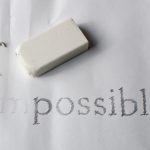“Learning ultimately supports the well-being of the self, the family, the community, the land, the spirits, and the ancestors”, I have explored this quote through self exploration and discovery and feel that we as a group expressed this through personal experience and learned or passed down knowledge. As a group, I feel that we worked well together, we had an array of personality types but one common ground we all had was respect for each others ideas and viewpoints.
When we first got our group together we had originally decided on a different piece to use, unfortunately one of the group members had gone ahead and put a fair amount of work into the project on their own. Upon our first meeting we learned that the piece was put to rest and no longer available to be used, we then recognized how “learning involves patience and time”, the student had put their patience and time into our assignment and we were not able to use any of it due to the song being put to rest. Seeing as one of the group members had already made us a template, it made it very simple for each of us to choose an area to work on, and, with google docs we were able to work collaboratively and remotely. As a group we discussed all of the components and shared ideas for each part of the assignment. My final job was to write in the assessment portion of the assignment and to open and close for the presentation.
I thought it was important to highlight the territorial acknowledgement into our introduction due to the topic and with the land on which we study. I was nervous and only practiced speaking it a couple handfuls of times and with that I learnt that “learning involves recognizing the consequences of one’s actions” – I should have practiced more.
Furthermore, I have been connecting with the elders in the first peoples house on campus and from our conversations I have begun to realize that there is not one “right” way of doing things, this touches in with “learning recognizes the role of indigenous knowledge”; as a closing piece I wanted to remind our learners that any tool can be used if it seems appropriate. The first people did not deem a certain item to be solely used a specific way, it would be used as needed. I wanted to acknowledge this as I personally struggled to understand the meaning of this.
From a personal example, I have been smudging with our elders and was gifted sage and sweetgrass, I had smudged many times with my elders but never at home on my own. I don’t have an abalone shell, I don’t have an eagle feather. How could I do this without these tools? One day I laughed at myself and figured, why not? I can do this, I can make it work. There I was with a wooden lid to a piece of home decor and an oven mitt, these were my substitutions for a shell and a feather. It didn’t work the best, but, that was my first time trying to do it on my own and I did it MY way. I went back to my elders the next week and we laughed about my experience and how I choose an oven mitt to fan. A week later, grandmother and grandfather brought me a shell so I could smudge with more success, which brings me to “learning involves generational roles and responsibilities”, I know this was not fully represented in the means of our presentation but it was something that I experienced along my journey and what I carried with me into my presentation and why I wanted to make a point of bringing it up at the end in my closing points “there is no one or right tool to use, the first peoples way of being is to use whatever tool is available and whatever feels right to you.”

Recent Comments